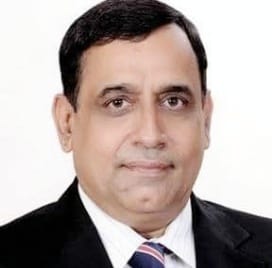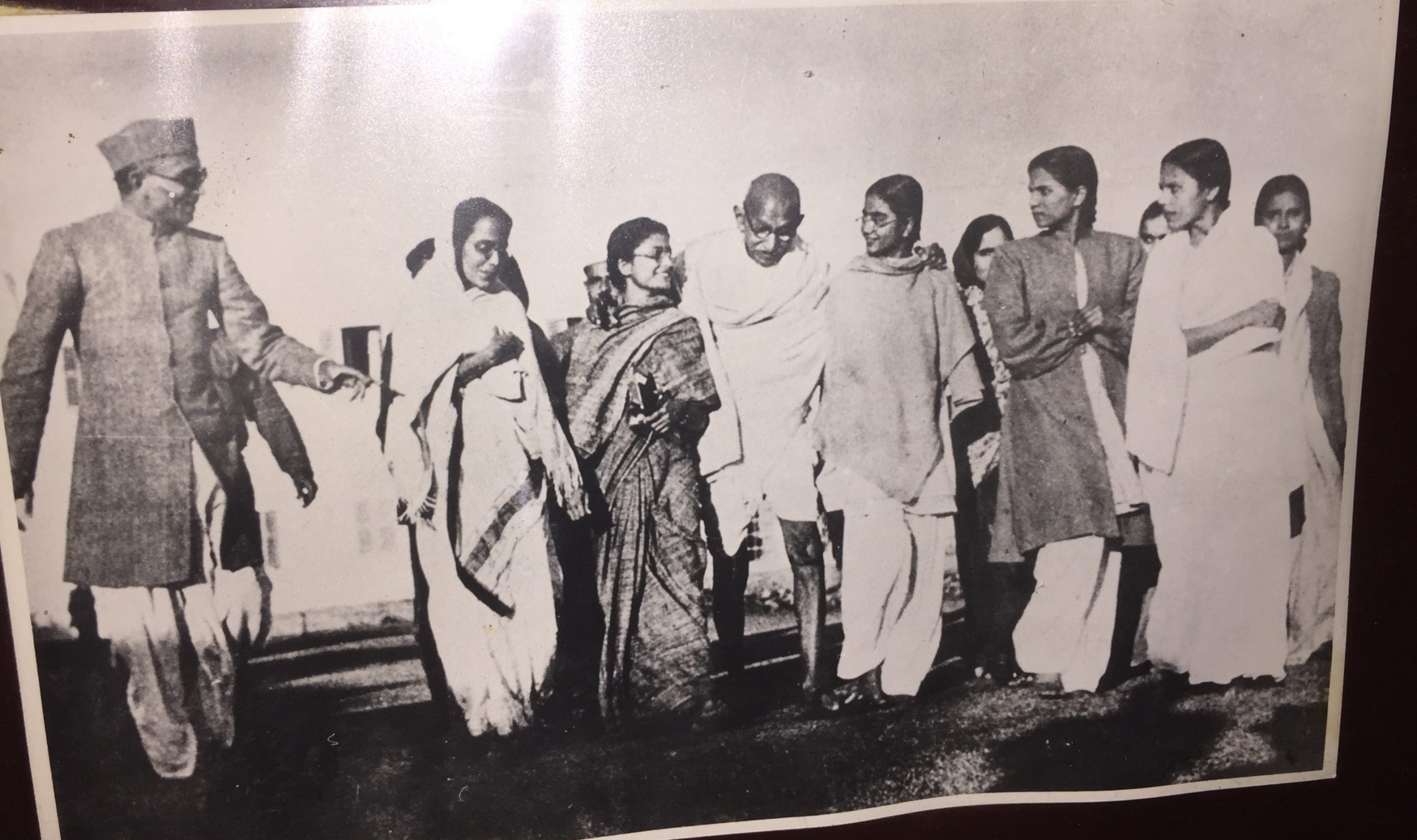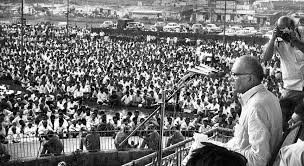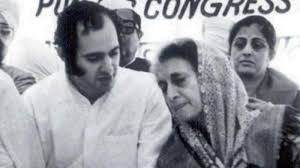Why a Political leader like Gandhi was addressed as Mahatma ?
Dr. Ravindra Kumar*
It was in 1969 that I had an opportunity to discuss a little about Mahatma Gandhi with my teacher for the first time. What conversation I had about is now lost in the abyss of time. But, later I always wondered why an international political leader like Gandhi was addressed as Mahatma, an honorific frequently used for a spiritually elevated soul. To find an answer, I think it is essential to review his life not in parts, but as a whole.
Gandhi, affectionately called Bapu, was a great leader endowed with a spiritual yearning for truth. The quintessence of his philosophy of life was the realizatdion of Satya –Truth and Ahimsa –Non-violence. His purpose of life was as he says, “to achieve self-realization, to see God face-to-face, to obtain Moksha –Salvation.” But, his approach was different from that of other seekers.
Gandhi received good Samskaras
Gandhi received good Samskaras (pre-disposition) by virtue of his birth in a religious Vaishnava family of Gujarat, particularly from his mother who left an indelible impression of her saintliness on his tender mind. He imbibed truthfulness from the characteristics of the hero of the play Harishchandra. He wondered, “Why should not we be truthful like Harishchandra?” The question haunted him day and night. King Harishchandra became the ideal hero of his dream and the paragon of truth. He so inspired him as to remain truthful all through his life even under trying circumstances and to stand firm on his convictions.
Gandhi’s endeavours for self-realization were through strict observance of truth. He moulded his actions on the basis of truth. It was only the truth that he perceived within. The word truth ordinarily connotes not to tell lies. But, for Gandhi it implied much more. Even hiding the truth from someone was deemed as untruth by him. He considered that the narrow implication of the term had belied its magnitude.
Defining truth, he writes, “The root of ‘Satya’ –truth lies in ‘Sat’. Sat means the ‘Being’ and Satya –the feeling of the Being. Everything is perishable except ‘Sat’. Therefore, the true name of God is ‘Sat’, thereby implying ‘Satya –Truth so, instead of saying ‘God is Truth’, it is better to say ‘Truth is God’.”
A question may now arise whether the realizatdion of truth and the realizatdion of self were one and the same for him, or the two separate experiences. We get the answer from Maharshi Raman, “What is Satya except Self? Satya is that, which is made of Sat. Again, Sat is nothing, but Self. So Gandhiji’s Satya is only the Self.”
It is now clear, what Gandhi meant by truth was in fact the realizatdion of Self. He writes, “What I meant to achieve –what I have been striving and pining to achieve these thirty years –is self-realization, to see God face-to-face, to attain Moksha –salvation.”
How to realize God
How to realize God, is a complicated question. The realization of God can be attained by purity of mind and heart and Sadhana –constant practice. The Shrimadbhagavad-Gita, the dialogue between Lord Krishna and Arjuna in the epic Mahabharata, is regarded as a sacred Hindu scripture and an infallible guide of daily practice. Lord Krishna tells about four paths of God-realization. They are: service and sacrifice –the Karmayoga, devotion and self-surrender –the Bhaktiyoga, meditation and communion with God –the Rajayoga and knowledge and wisdom –the Jnanayoga. There is no line of demarcation between one and another and one path does not exclude the others. A seeker can follow any of them according to her/his temperament. Ultimately, they all lead to one goal –the realization of God.
Gandhi held the Shrimadbhagavad-Gita in high esteem. He writes, “Those who will meditate on the Gita will derive fresh joy and new meanings from it every day. There is no single spiritual tangle, which the Gita cannot unravel.” He found an answer to the above question in the Gita –Vairagya (non-attachment) or Abhyasayoga (practice). Vairagya means total indifference to worldly things and concentration only on the Absolute. Lord Krishna says in the Gita (XII: 8), “Fix thy mind on Me only, place thy intellect in Me; then thou shalt no doubt live in Me alone hereafter.”
And further says (XII: 9) He, “If thou art not able to fix thy mind steadily on Me, then by Yoga of constant Practice –the Abhyasayoga do thou seek to reach Me”. Gandhi was born to serve humanity. He was a practical man; he chose the path of practice and the path of renunciation of the fruits of action. Absolute faith in God and surrender to His Will became his object of observance –Niyama and the constant thought of the Truth –Practice (the Abhyasayoga).
His mind was always occupied with truth in all walks of life –personal, social or political. Gandhi was a seeker and introspection was the method of his Sadhana. He writes, “I have gone through deep introspection, searched myself through and through, and examined and analysed every psychological situation.”
The study of the Gita and the process of self-introspection brought him face-to-face with the true meaning of Ahimsa (non-violence) –no violence in thought, speech and action. He came to the conclusion that the realization of truth was impossible without adherence to the supreme conduct of man –Ahimsa.
In his opinion Satya –Truth and Ahimsa were as inter-mingled as the two sides of a coin. For the achievement of one or the other, complete control over the senses of Action –Karmendriya and those of Perception –Jnanendriya is essential.
Lord Krishna also says in the Gita (III: 37-43), “Control Raga-dvesha (attachment–malevolence), obstructions on spiritual path; Do your duty well. Control desire and anger –the enemies of wisdom. Master first the senses. Kill this enemy –desire by restraining the self by self and by knowing Him who is superior to intellect.”
Truth and Ahimsa
Truth and Ahimsa exist at the same level as a pair, i.e., Truth-Ahimsa, yet Gandhi regarded Ahimsa as means (Sadhana) and Truth as the ultimate goal –Sadhya. It is said, Ahimsa is the super most duty –Ahimsa Parmodharmah. Truth for Gandhi was the eternal reality –the Almighty God. He, therefore, strived for and adhered to perfect Truth in thought, speech and action all through his life and, thereby, achieved the realization of self. It is most likely that he practiced also the Kriyayoga, he was initiated in it by Paramahansa Yogananda, who visited him in Wardha Ashram in 1935. Although lean and frail in appearance, he was strong in body and mind and glowed with spiritual health.
Gandhi once admitted that he had little knowledge of religions even of Hinduism, yet, like every Hindu, he believed in God, in rebirth and salvation. He had a broad perception of Hinduism. In this perspective he says, “I believe Hinduism is not an exclusive religion. In it there is room for the worship of all the prophets of the world. It is not a missionary religion in the ordinary sense of the term. It has no doubt absorbed many tribes in its fold, but the absorption has been of an evolutionary, imperceptible character. Hinduism tells each man to worship God according to his own faith or Dharma and so live at peace with all religions.”
So, he regarded all religions with Sambhava –equitability. He perceived no religion was superior or inferior. He had studied about all religions of the world and came to the conclusion, as he says, “I believe the Bible, the Koran, and the Zend–Avesta to be as divinely inspired as the Vedas.” He even tried in his mind to unify the teachings of the Gita, the Sermon on the Mount and the Light of Asia and found renunciation in the Gita as the greatest philosophy of all religions.
Gandhi said, “Nothing delights me so much as the music of the Gita or the Ramayana by Tulsidas.” It will, therefore, not be out of context if we consider here the influence of the Ramayana on him. The Ramayana is an epic like Milton’s Paradise Lost –a grand story, of a grand man, in a grand style. But, unlike Paradise Lost, the Ramayana is a sacred scripture of the Hindus. Therein, Tulsidas has portrayed the persona magnum, Rama, as an incarnation of Vishnu as well as a model human being with high moral values to serve as an example for common man.
Frank Whaling writes, “Rama has remained a symbol of Dharma, human relationship and kingship; for others He has been a symbol of ‘Brahman’ or a symbol of the loving Lord.”
In his childhood, the repetition of Ramanaama –Rama’s name, suggested to him to ward off his fear of ghosts and spirits, became an infallible guide for him later in life. Gandhi was highly impressed with the characteristics of Rama. Gandhi’s heart was the permanent abode of Rama Who was endowed with the attributes of Brahman.
Rama’s obedience, ready submission to the vows of His father, His love for His subjects, protection to the weak, and equanimity to all beings He met during His exile, left deep impressions on Gandhi’s mind and heart. But, what impressed him most was Rama’s way of administration –the Ramarajya, in which justice prevailed and the voice of the lowest of the lowest ones was given due regard. In fact, he regarded the Ramarajya as the true model of governance.
In introduction to his autobiography, Gandhi has written, “My experiments in the political field are now known. But, I should certainly like to narrate my experiments in the spiritual field, which are known only to me and from, which I have derived such power as I possess for working in the political field.” Indeed, he relentlessly pursued truth all through his life and achieved self-realization.
It is an anomaly that he is remembered and evaluated only for his political achievements. Little attention has been paid to the spiritual force within him from which he derived power to work in personal, social and political fields. According to Maharshi Raman, Adhyatmik Shakti –spiritual force was working within him (Gandhi) and leading him on. He always listened to his inner voice and took decisions accordingly. His inner-self prompted him to serve the wounded in the Boer War and the Zulu Rebellion in South Africa. He was always on the frontline and fearlessly led people in Satyagraha and Non-Cooperation Movements. Undaunted he walked unarmed without any protection through the riot-hit areas at the time of partition of India, giving the message of faith, love and peace.
Gandhi was a Yogi
Gandhi was a Yogi –a householder living amidst people. He was a Nishkamakarmayogi with no aspiration for any recognition or reward. He had limited his desires and needs to the bare minimum. Whatever he did, he did with right intention, right spirit and conviction, and worked for the benefit of others irrespective of caste, creed or religion. Notwithstanding the power he wielded over the Congress party and the masses, he never aspired for or accepted any kind of office. Had his name been proposed as the first President of India in recognition of his services to the nation, I am sure, none would have opposed it, but he himself. He was such a great and magnanimous person. Rabindranath Tagore, a poet and visionary, recognized his greatness and spirituality and called him the Mahatma, an attribute he aptly deserved.
Lord Krishna says to Arjuna in the Gita (IV:7), “Whenever righteousness declines and unrighteousness becomes powerful then I myself come to birth.” If we turn to the pages of the history of the world, it is evident that there have descended super-beings, whenever the righteousness or ethical values are on a decline, to guide people on to the righteous path. The Indian soil is credited with the birth of many a super-being or the lofty spiritual personages who inspired people to forsake the evils of materialism that cause suffering, dissatisfaction and misery and to follow the path of spiritualism.
Rational explanations of Mahatma Gandhi’s thoughts and acts will certainly place him in history in line with Lord Mahavira, Gautama Buddha and Jesus Christ. Gandhi stood for truth, Ahimsa, compassion and service all through his life. ‘To serve humanity is the service of God’ was the principle of his life.
He was a social saviour of the oppressed and down-trodden people and fought for their right of equality and justice. It is not all; he was the political saviour of nations in political turmoil. The leaders of many subjugated races and countries drew inspiration from him for their rights. Like Jesus Christ, he was forgiveness personified. He had no feeling of malice towards anyone in his dying moments and breathed his last remembering his chosen deity ‘Rama’.
Paying a glowing tribute to Mahatma Gandhi, Albert Einstein has written, “Generations to come will scarce believe that such one as this ever in flesh and blood walked upon this earth.”
Today, we are passing through a crisis –a crisis of identification of values. The world is entrapped in gross materialism. Man has become so selfish as to have utter disregard for others whether an individual or a society or a nation. Scientists are vying with each other to play the role of the Creator. It is high time to create a balance between materialism and spiritualism. In the chaotic circumstances prevailing all over the world today, we are looking for peace as elusive as the mirage in a desert. I think, Mahatma Gandhi’s life and his teachings can serve as beacon to guide us and lead us to steady peace.

*The writer Dr. Ravindra Kumar is Padma Shri and Sardar Patel National Awardee Indologist and social scientist. He is the Former Vice Chancellor of Meerut University; he is the Editor-in-Chief of Global Peace International Journal also.





